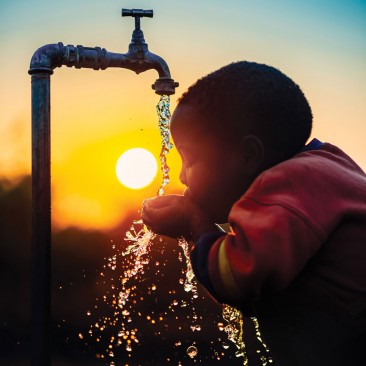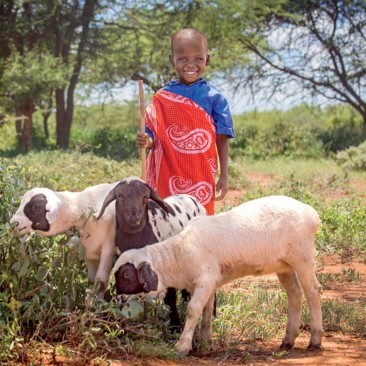Earth is a phenomenal planet: we humans have created a world for ourselves that has so much to boast. As a species, we have evolved unlike any other and it’s amazing to see the strides we have taken since man and woman first came to existence. One of the very great things about our planet is the diversity we have within our entire population. Different religions, cultures, and races give us the unique opportunity to constantly learn and it’s always a fulfilling experience to discover how others live and go about their day-to-day.
Unfortunately, not everyone has the same privileges as others. Sadly, there are areas where food, water, basic medical care, and education are hardly attainable. Organizations such as World Vision exist to help eliminate these type of discrepancies and operate to help those that can’t afford the necessities in life. The Internet has changed how we connect with one another. Now we have the privilege of being able to communicate with people near and far – even a simple video chat enables us to carry a conversation with someone on the other side of the globe.
With that being said, children of the latest generations will be more connected than ever, and so it’s important to teach them to be as open-minded us possible. Let’s encourage children to be the best global citizens they can be and encourage them to genuinely appreciate the world’s diversity. In doing so, we can also teach them the importance of being charitable, and how helping others to have a better life is a selfless and beautiful act. Here are a few ways to introduce these concepts to your children:
5 Ways To Encourage Your Children to Be Charitable
- Expand Their Knowledge Through Books & Storytelling: Reading with your children is one of the most effective ways to teach and introduce them to new topics. Expand their knowledge on the world’s diverse population by picking up a book that is accurate in discussing and portraying different cultures. But don’t stop once the story’s over: engage in conversation and ask them what they’ve learned, what was interesting about the topic, etc.
- Show Them Statistics In A Way They Understand: Paint your children a clearer picture on the statistics that we use to understand the inequality taking place in our world. For instance, 1 in 6 children are dangerously underweight because of their lack in accessibility to food, nutrition, and water. Beads and buttons can be used as a visual aid to help your children grasp a better understanding of numbers like these. Ask them to count how many classmates they have and match that number to the number of beads you’ll use for the activity. If say, they have 24 children in their class, remove four beads to show them how this represents the children who are suffering from lack of nutritional assistance.
- Walk A Mile In Their Shoes: Another heartbreaking statistic to put into perspective: 1.3 billion live on $1.25 worth of food a day. On your next trip to the grocery store, give your child $1.25 and ask them to create a menu based on this budget. They’ll understand the hardships that others have to go through and it will be an immediate eye-opener.
- Compare and Contrast Privileges: Have a discussion with your children about the simple, everyday objects that often go under-appreciated. For instance, if you lead a conversation on the topic of natural disasters, ask them what they would do to prepare for a rainstorm. Naturally, they’ll talk about their umbrellas, raincoats, and rainboots and how they’ll be protected from a few showers because of their gear. Show them pictures of the inadequate shelter that other children have and allow your children to speak their minds on how difficult it would be to live under such conditions.
- Sponsor A Child: Enable your child to help others in need by sponsoring a child through World Vision. As a family, you can get together and perform one of the greatest acts of kindness by donating to a boy or girl who suffers from malnutrition, inaccessibility to medical assistance, etc. Encourage your child to draw pictures, cards, and write letters to make them feel as involved as possible. It also gives you the chance to show them how they’re giving these children the opportunity to have access to clean water, bed nets, and food.
Through World Vision, we can help in creating the equality we’ve been striving to achieve to for so long. For instance, a gift of $35 can provide a child with $420 worth of medicines; a $25 donation can amount to $300 worth of necessities in the USA. You can also donate through purchases of items made by local artisans. For instance, I received the Mango Wood Beaded bracelet, which sells for $45. Imagine the impact that we can make together as a world. Follow World Vision on both Facebook and Twitter to learn more about how you and your family can be the best global citizens you can be. Learn more about how World Vision child sponsorship works and reach out today! One USA reader will win a handmade Artisan Baby Bib ARV $40.
How can you teach your kids to be more socially responsible?





